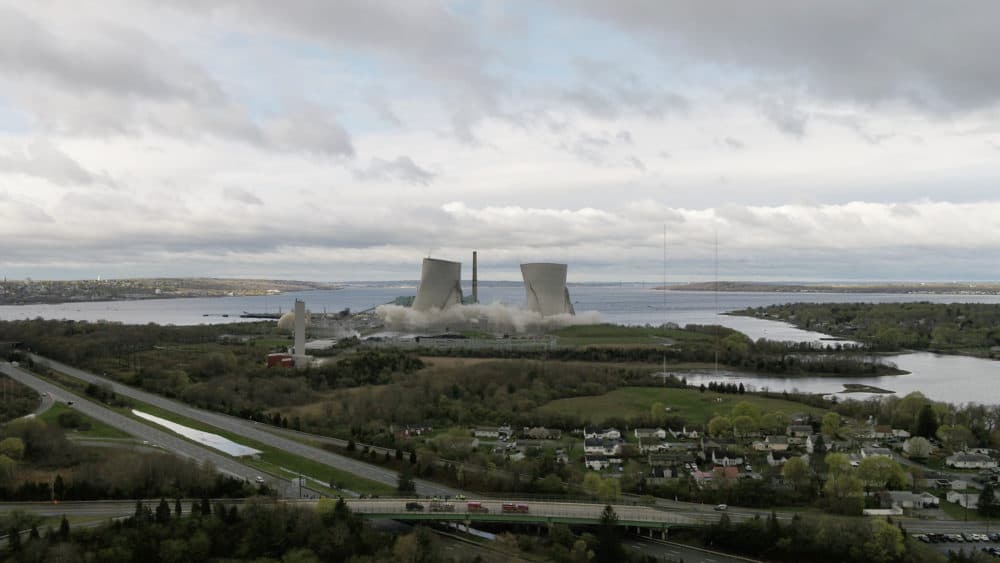Advertisement
Anbaric Files Application For Offshore Transmission Network

The company that is turning the site of a former coal-burning power plant in Somerset into a green energy center has filed a federal application to develop a single transmission network that could deliver power from offshore wind farms to Massachusetts, Rhode Island and Connecticut.
Anbaric, a Wakefield-based company that focuses exclusively on transmission, said it filed an application with the federal Bureau of Ocean Energy Management (BOEM) for "non-exclusive rights-of-way to develop the Southern New England OceanGrid," which it described as an "independent, open-access" offshore wind transmission system.
If approved, the company said its plan would be to link existing wind lease areas to one common transmission network and then deliver as much as 16,000 megawatts of clean power to the three southern New England states. The project's benefits, according to Anbaric, would include greater efficiency, improved reliability and limited environmental impacts.
"As offshore wind's potential gains momentum, it's time to think big and plan rationally. It becomes clearer every day that transmission must lead the way towards greater scale, reliability and efficiency, just as it has in Europe," Anbaric CEO Edward Krapels said. "Individual wind farm developers have gotten the industry off to a good start, but we now need a networked grid to minimize conflict and create a truly reliable offshore transmission system that will substantially de-risk wind projects."
Stephen Conant, an Anbaric partner and project manager, described the idea of independent or expandable transmission as being like a power strip when he spoke with legislators at a briefing in June.
"Imagine if we're all in here and we all want to charge our phones into one outlet. Difficult. The collective best way to do it would be to actually have a common line where you would then have everyone — just like you do at the airport — everyone plugs into a common location," Conant said. "It's as simple as that."
Conant said most of the conversation around offshore wind has focused on the power generation rather than the transmission. The 2018 Massachusetts law that authorized another 1,600 megawatts of offshore wind power and allowed the state Department of Energy Resources (DOER) to split generation and transmission was the first offshore wind law in the country that "actually mentioned transmission," he said.
"There's been a lot of discussion about offshore wind, about the generation part of things," Conant said. "But the transmission part, let's just say it's assumed it will be there."
The DOER is conceptually on board with the idea of splitting the state's procurement practices to have one process to pick developers to generate the power and a separate solicitation for an independent and shared transmission line system.
In late May, the department proposed that the state stop soliciting clean energy generation and the transmission of that energy as a single package and instead suggested that it move forward in 2020 with a solicitation for the main transmission system that future generation projects would be required to tie into. Having one primary transmission system "has the potential benefit of minimizing impacts on fisheries, optimizing the transmission grid, and reducing costs," the report concluded.
But offshore wind developers have been cool to the idea of independent transmission. At a June conference in Boston, Vineyard Wind CEO Lars Thaaning Pedersen said developers would be wary of investing so much money into a project only to find out when power generation begins that the transmission feed, which would be controlled by a different entity, is unable to deliver that power to land.
"I don't see a lot of reasons for a grid that serves many projects for a number of reasons," he said. "As a developer, we put $2 or $3 billion in the water and you want to make sure the grid is there on time, on cost and on budget, and if somebody else owns it you want to make sure they have an incentive to keep it up and running at all times."
Anbaric said its proposed Southern New England OceanGrid would be built out over a period of 20 years. Its application was submitted Nov. 18 and the company asked the federal government post its application in the Federal Register for public comment by Jan. 1, 2020. The company has previously filed an application with BOEM for a separate "New York/New Jersey OceanGrid," which remains under review.